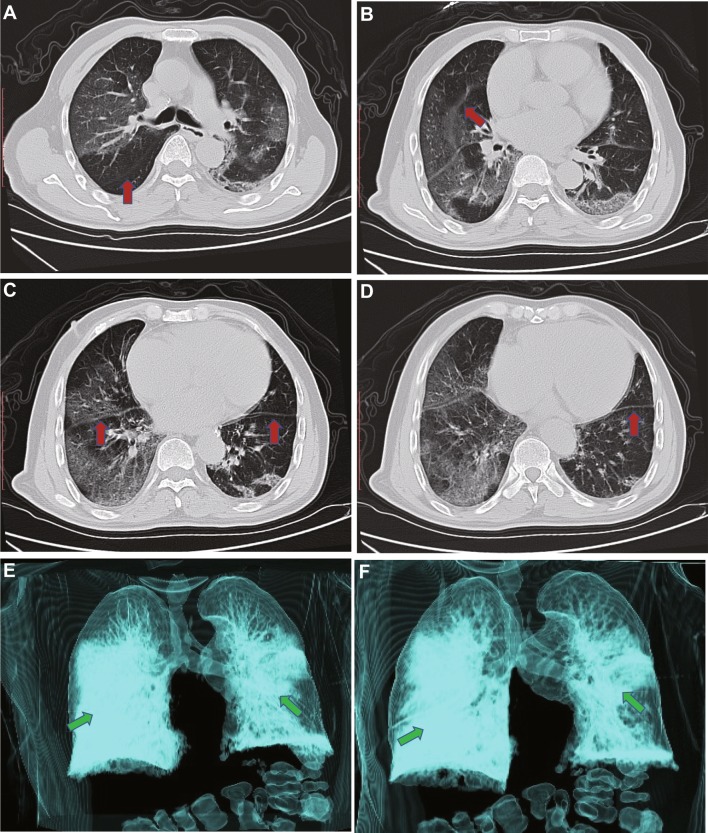A 75-year-old male who was confirmed as suffering of severe COVID pneumonia was transferred to the intensive care unit (ICU) of our hospital—a tertiary teaching hospital of a medical university. He had a history of 10-year hypertension and one-year diabetes. A physical examination unveiled that his body temperature was 35.5 ℃, his pulse was 54 beats per minute, his blood pressure was 136/79 mm Hg (noradrenaline 0.2 µg/kg/min), his oxygen saturation was 91% (noninvasive ventilation), and oxygenation index (OI: PO2/FiO2) 100 mmHg. He was diagnosed with severe COVID-19 pneumonia combined with acute respiratory distress syndrome (ARDS), septic shock, and multiple organ dysfunction syndrome (MODS). We focused on the typical imaging feature of chest CT in the patient (Fig. 1). The white “Septal Line” marked by the red arrow in Fig. 1 (Panel a–d) suggests that cellulosic exudation occurred in the surface of lung lobes. In dynamic imaging, these white lines are clearly visible, which provides evidence for us to judge severe COVID-19 pneumonia. In the three-dimensional imaging system, three-dimensional reconstruction of bilateral lung lesions provided a key clue for early identification of the disease. Presently, his condition is relatively stable.
Fig. 1.
Chest computed tomography and three-dimensional reconstruction of the patient's lungs. Shown are chest CT scans obtained at admission (onset the fifth day) in the local hospital: Chest computed tomography (CT) scan (a, b, c, d) red arrows denote “Septal Line” formed by cellulosic exudation between lung lobes; three-dimensional reconstruction (e, f) green arrows denote multilobed lesions of bilateral lungs
Acknowledgements
The author thanks the patient and all the members of his family.
Availability of data and materials
The author stated that all the data and materials were true and available in the study.
Compliance with ethical standards
Conflicts of interest
The author has no conflicts of interest to disclose.
Ethical statement
There are no ethical/legal conflicts involved in the article.
Ethical approval and consent to participate
Written consent from the patient was waived, because of entirely anonymized images from which the individual cannot be identified.
Consent to publish
The author confirms that he has read the Journal’s position on issues involved in ethical publication and affirms that this report is consistent with those guidelines.
Footnotes
Publisher's Note
Springer Nature remains neutral with regard to jurisdictional claims in published maps and institutional affiliations.
Associated Data
This section collects any data citations, data availability statements, or supplementary materials included in this article.
Data Availability Statement
The author stated that all the data and materials were true and available in the study.



